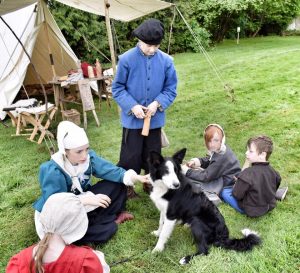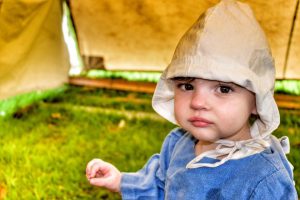 Up until the age of seven, both boys and girls would have been dressed the same, in shifts and dresses. This may have been for practical hygienic reasons and ease of alterations, dresses/shifts can be made with a long hem which can be adjusted as the child grows, whereas male dress is more awkward to adjust and lengthen. There may also have been superstitious reasons behind this fashion, as it is documented that the infant mortality rate was higher among boys than girls and as such parents may have tried to cheat death by disguising their sons as girls.
Up until the age of seven, both boys and girls would have been dressed the same, in shifts and dresses. This may have been for practical hygienic reasons and ease of alterations, dresses/shifts can be made with a long hem which can be adjusted as the child grows, whereas male dress is more awkward to adjust and lengthen. There may also have been superstitious reasons behind this fashion, as it is documented that the infant mortality rate was higher among boys than girls and as such parents may have tried to cheat death by disguising their sons as girls.
Children were not subject to a formal education. Only the wealthy would have been formally educated, taught to read and write in both English and a foreign language. It would also have been essential for them to learn the art of horsemanship and defence (swordsmanship).
More typically children would have entered into apprenticeships to learn particular trades, which they would eventually master. Alternatively children would help with the agricultural cycle, becoming labourers. For instance children would often be given clappers and sent into to fields to scare away birds.
